#jean-françois dutertre
Explore tagged Tumblr posts
Video
youtube
Jean-François Dutertre - La barbière
1 note
·
View note
Photo





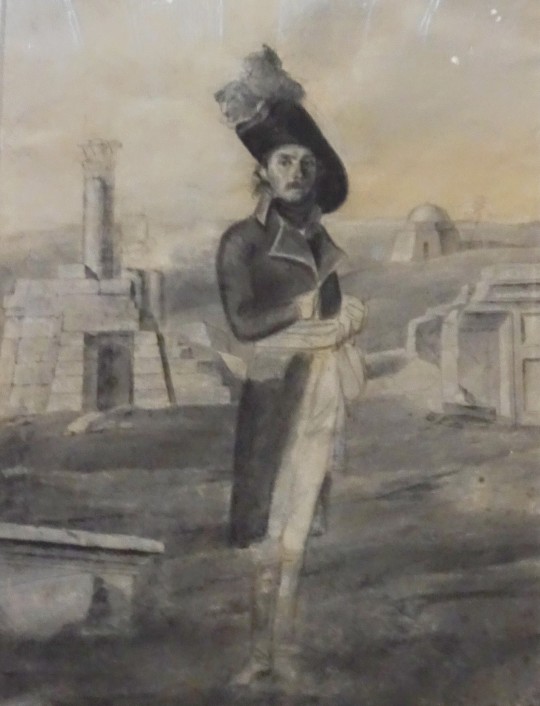
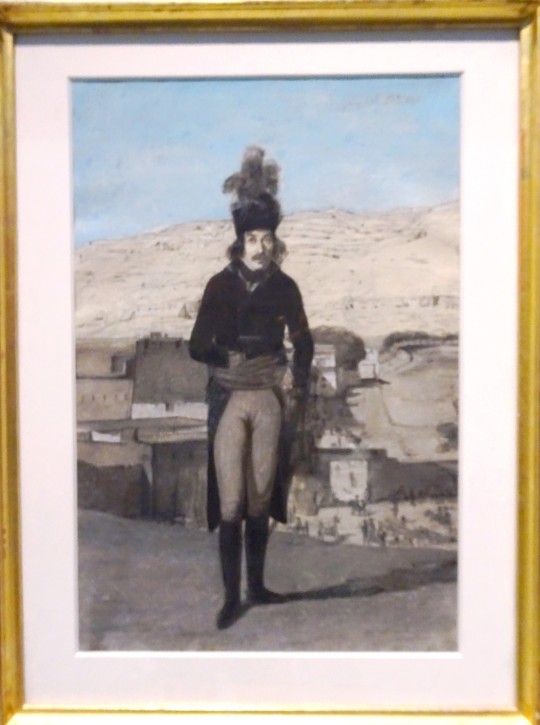
Au Louvre-Lens, il y avait une expo fort intéressante : “Champollion - La Voie des Hiéroglyphes”, sur l’homme, son époque, l’image de l’Egypte en Europe avant l’Egyptologie....
- Jean-Léon Gérôme - "Bonaparte entrant au Caire”
- Jean-Charles Develly - "Vase égyptien Champollion" - Sèvres 1831
- Nestor Lhôte - recueil de dessins, "Paysage de la Vallée des Rois”
- Jean-François Champollion - "Monuments de l'Egypte et de la Nubie - volumes I et II”
- Giuseppe Angelelli - "Portrait de Jean-François Champollion en costume égyptien”
- André Dutertre - portraits pendant l'Expédition d'Egypte, "Général François-Xavier Donzelot”
- André Dutertre - portraits pendant l'Expédition d'Egypte, “Louis-Charles-Antoine Desaix”
#louvre-lens#expo#champollion#la voie des hiéroglyphes#égypte#égyptologie#campagne d'égypte#bonaparte#napoléon#jean-léon gérôme#le caire#jean-charles develly#porcelaine de sèvres#sèvres#nestor lhôte#jean-françois champollion#monuments de l'égypte et de la nubie#giuseppe angelelli#andré dutertre#expédition d'égypte#général donzelot#françois-xavier donzelot#desaix#louis-charles-antoine desaix
6 notes
·
View notes
Text
mini tournament, round 1, match 4: la fille parricide vs weila weila waile


examples & descriptions
la fille parricide
"a princess tries to assassinate her father because he won't let her marry, but he bribes the assassins and kills her instead"
jean-françois dutertre
weila weila waile
"gruesomely sing-song childish chant about infanticide"
the dubliners
13 notes
·
View notes
Text
I wanted to rec The Cruel Ship's Carpenter as another murder ballad where the woman does get her vengeance, and it turns out to be related to the above-mentioned Pretty Polly!
From Mainly Norfolk (emphasis added by me):
Paddy McCluskey of Clough Mills, Co Antrim, North Ireland, sang Young Willie to Peter Kennedy and Sean O’Boyle on 5 August 1953. This BBC recording 20032 was included without verses 1, 3 and 4 on the anthology Fair Game and Foul (The Folk Songs of Britain Volume 7; Caedmon 1961; Topic 1970). The album’s booklet noted: "No British broadside ballad has been more important in American tradition than The Cruel Ship’s Carpenter or The Gosport Tragedy. It tells of a young lady lured from her home by her sailor-lover and murdered. Later, on shipboard, her ghost appears and tears him in three parts before the eyes of the superstitious crew. This latter part of the story did not survive in the common American variants, but the theme, the murder of the innocent and pregnant girl by her lover gave rise to many indigenous American ballads—Pretty Polly, The Knoxville Girl, Hattie Stout, Down in the Lone Green Valley to mention only a few. This was certainly the most popular domestic folk ballad subject in middle America during the 19th century. Theodore Drieser chose it as the theme of his greatest novel, The American Tragedy."
So if you feel you're missing out on the satisfying ending, try Jackie Oates's version:
Also to follow up @rapidashrider 's recs, there's a fantastic French version of The Outlandish Knight (a Bluebeard story kind of!) that I think I read inspired Nic Jones's classic version
And if you ever ever get a chance to see the stage play 'The Ballad of Maria Martin' about the Red Barn murder then you'll get a properly feminist take on the tabloid frenzy around it, with an all female cast and beautiful songs. The script is available here.
the appalachian murder ballad <3 one of the most interesting elements of americana and american folk, imo!
my wife recently gave me A Look when i had one playing in the car and she was like, "why do all of these old folk songs talk about killing people lmao" and i realized i wanted to Talk About It at length.
nerd shit under the cut, and it's long. y'all been warned
so, as y'all probably know, a lot of appalachian folk music grew its roots in scottish folk (and then was heavily influenced by Black folks once it arrived here, but that's a post for another time).
they existed, as most folk music does, to deliver a narrative--to pass on a story orally, especially in communities where literacy was not widespread. their whole purpose was to get the news out there about current events, and everyone loves a good murder mystery!
as an aside, i saw someone liken the murder ballad to a ye olde true crime podcast and tbh, yeah lol.
the "original" murder ballads started back across the pond as news stories printed on broadsheets and penned in such a way that it was easy to put to melody.
they were meant to be passed on and keep the people informed about the goings-on in town. i imagine that because these songs were left up to their original orators to get them going, this would be why we have sooo many variations of old folk songs.
naturally then, almost always, they were based on real events, either sung from an outside perspective, from the killer's perspective and in some cases, from the victim's. of course, like most things from days of yore, they reek of social dogshit. the particular flavor of dogshit of the OG murder ballad was misogyny.
so, the murder ballad came over when the english and scots-irish settlers did. in fact, a lot of the current murder ballads are still telling stories from centuries ago, and, as is the way of folk, getting rewritten and given new names and melodies and evolving into the modern recordings we hear today.
305 such scottish and english ballads were noted and collected into what is famously known as the Child Ballads collected by a professor named francis james child in the 19th century. they have been reshaped and covered and recorded a million and one times, as is the folk way.
while newer ones continued to largely fit the formula of retelling real events and murder trials (such as one of my favorite ones, little sadie, about a murderer getting chased through the carolinas to have justice handed down), they also evolved into sometimes fictional, (often unfortunately misogynistic) cautionary tales.
perhaps the most famous examples of these are omie wise and pretty polly where the woman's death almost feels justified as if it's her fault (big shocker).
but i digress. in this way, the evolution of the murder ballad came to serve a similar purpose as the spooky legends of appalachia did/do now.
(why do we have those urban legends and oral traditions warning yall out of the woods? to keep babies from gettin lost n dying in them. i know it's a fun tiktok trend rn to tell tale of spooky scary woods like there's really more haints out here than there are anywhere else, but that's a rant for another time too ain't it)
so, the aforementioned little sadie (also known as "bad lee brown" in some cases) was first recorded in the 1920s. i'm also plugging my favorite female-vocaist cover of it there because it's superior when a woman does it, sorry.
it is a pretty straightforward murder ballad in its content--in the original version, the guy kills a woman, a stranger or his girlfriend sometimes depending on who is covering it.
but instead of it being a cautionary 'be careful and don't get pregnant or it's your fault' tale like omie wise and pretty polly, the guy doesn't get away with it, and he's not portrayed as sympathetic like the murderer is in so many ballads.
a few decades after, women started saying fuck you and writing their own murder ballads.
in the 40s, the femme fatale trope was in full swing with women flipping the script and killing their male lovers for slights against them instead.
men began to enter the "find out" phase in these songs and paid up for being abusive partners. women regained their agency and humanity by actually giving themselves an active voice instead of just being essentially 'fridged in the ballads of old.
her majesty dolly parton even covered plenty of old ballads herself but then went on to write the bridge, telling the pregnant-woman-in-the-murder-ballad's side of things for once. love her.
as a listener, i realized that i personally prefer these modern covers of appalachian murder ballads sung by women-led acts like dolly and gillian welch and even the super-recent crooked still especially, because there is a sense of reclamation, subverting its roots by giving it a woman's voice instead.
meaning that, like a lot else from the problematic past, the appalachian murder ballad is something to be enjoyed with critical ears. violence against women is an evergreen issue, of course, and you're going to encounter a lot of that in this branch of historical music.
but with folk songs, and especially the murder ballad, being such a foundational element of appalachian history and culture and fitting squarely into the appalachian gothic, i still find them important and so, so interesting
i do feel it's worth mentioning that there are "tamer" ones. with traditional and modern murder ballads alike, some of them are just for "fun," like a murder mystery novel is enjoyable to read; not all have a message or retell a historical trial.
(for instance, i'd even argue ultra-modern, popular americana songs like hell's comin' with me is a contemporary americana murder ballad--being sung by a male vocalist and having evolved from being at the expense of a woman to instead being directed at a harmful and corrupt church. that kind of thing)
in short: it continues to evolve, and i continue to eat that shit up.
anyway, to leave off, lemme share with yall my personal favorite murder ballad which fits squarely into murder mystery/horror novel territory imo.
it's the 10th child ballad and was originally known as "the twa sisters." it's been covered to hell n back and named and renamed.
but! if you listen to any flavor of americana, chances are high you already know it; popular names are "the dreadful wind and rain" and sometimes just "wind and rain."
in it, a jealous older sister pushes her other sister into a river (or stream, or sea, depending on who's covering it) over a dumbass man. the little sister's body floats away and a fiddle maker come upon her and took parts of her body to make a fiddle of his own. the only song the new fiddle plays is the tale about how it came to be, and it is the same song you have been listening to until then.
how's that for genuinely spooky-scary appalachia, y'all?
2K notes
·
View notes
Note
And if you’d like any more (no pressure) maybe young-Philippa folk playlist?


LOVED making this, in fact I kind of made two playlists again, whoops, one for when you just want about an hour of folky bops, one for when you have more like 100 minutes to spare...
Every Cell Charged with Stark Common Sense
A playlist for growing up wild in Northumbria and being ready to absolutely wreck any mercenary rock stars who show up to threaten your parents
Steeleye Span - False Knight on the Road
Ivor Cutler Trio - Good Morning! How Are You? Shut Up!
Kathryn Tickell - Ronell's Reel/Bob Thompson's
Martin Carthy & Dave Swarbrick - Byker Hill
Jean-François Dutertre - Le tueur de femmes
Steeleye Span - Twa Corbies
Lal & Norma Waterson - The Pretty Drummer Boy
Fairport Convention - Come All Ye
Anne Briggs - Living by the Water
Kathryn Tickell - Da Slickit Light
Vin Garbutt - The Legend of Roseberry
Martin Carthy & Dave Swarbrick - Sovay
Nic Jones - Billy Don't You Weep for Me
Steeleye Span - The Blackleg Miner
Spriguns of Tolgus - The Lambton Worm
Kate Bush - Violin
Elvis Costello & the Attractions - Shipbuilding
Kathryn Tickell - Johnny Cope/Tipsy Sailor
Dexy's Midnight Runners - Come On Eileen
FCs are Ellie Kendrick and Lucy Farrell. Title is from DK, helpfully sourced by @erinaceina <3
I’m afraid you may gain the impression through my commentary that I don’t think common sense is quite the only guiding principle of small Somervilles...
The principles of a Pippa playlist: 1) she is a Weird Little Girl 2) she is a feral country child raised by folkies. Inevitably this means she is a fan of certain grim folk songs, but she's not really into murder ballads per se, though she objects to the latter aspect (ballad) more than the former (murder). If these silly maidens weren't so interested in falling in love with men they wouldn't get murdered, would they?!
So: 1) False Knight on the Road It may be a boy in the song, but I can well imagine Pippa playing at telling the Devil to go stuff himself by means of riddling answers and a mean fiddle riff. 2) Ivor Cutler One of her parents' records that small Pippa gloms onto, to their slight bemusement. An eccentric Scotsman singing eccentric songs and telling eccentric stories while playing harmonium - Pippa has a brief obsession with the harmonium because of it and insists on being told the story of 'Mary's Drawer' at bedtime (see Pippa's extended EP, below) 3) Lots of Kathryn Tickell on this!! The album is early '80s but it's A Sign that she released anything that early and can therefore be on the Pippa playlist - she's an accomplished fiddle player and Northumbrian pipes player and definitely an icon for Philippa. 4) Byker Hill Also loads of these boys on the playlist as a duo and with Steeleye Span/Fairport. Dave Swarbrick was one of the best and most well-known folk fiddlers of the revival and Marty Carty is folk royalty. This being a local song, of course Pippa loves it. 5) Le tueur de femmes She picks this up from one of the records Gideon brings back from his travels (technically this album seems to be from the '90s but I'm using Folk License for this, plus the LP might have been released earlier in France. The arrangement will certainly have been used by French musicians in the '70s). She doesn't understand the lyrics for a long time but knows there's a strange sinister quality to it, and probably at some point clicks that it's the same song as The Outlandish Knight on her parents' Nic Jones record. So it's the Bluebeard story where the 'final girl' drowns the serial killer and goes home to tell her pet parrot not to snitch on her for running off with, almost being killed by, and then herself killing a strange foreign knight. A Pippa vibe. 6) Twa Corbies More morbid folk! Ravens discussing the dead body of the knight they're about to feast on. With added Dave Swarbrick on the fiddle. 7) Lal & Norma Waterson More folk royalty! A happily G-rated take on the young girl sneaking off to join the armed forces - she doesn't end up having to marry anyone at the end, or being discovered because she gets pregnant by her captain. It's just that a lady falls in love with her and then she gets outed and sent home. But she did have fun playing the drum and travelling before that! 8) Fairport Convention - Come All Ye There are probably times in Contrary Teenage Philippa's life when she claims to be 'over' folk rock and to have 'outgrown' it. But put this track on and she won't be able to resist singing along. 9) This is what she claims to have outgrown folk rock for, so fair play to her - Anne Briggs is a gem of the folk revival, and probably reminds Pippa of her mum, though Kate's voice isn't as high. An early indication for Philippa that folk heroes *can* write their own songs and those can be just as good as the trad stuff! 10) More Kathryn Tickell on the pipes :) 11) Vin Garbutt A local folkie singing in local dialect! It's a bit further south than Pippa's country technically, but another miserable story turned into quite a bop. For anyone struggling with the words, it's about Oswald of Northumbria's baby son and the prophecy that he would die by drowning - his mother took him to the top of the hill Roseberry Topping in Teeside to prevent this, but baby Oswy went toddling off and tripped and drowned in a spring at the summit while she slept. She died of grief and was buried nearby, which is the folk etymology for the village name 'Osmotherly' (< Oswy's mother). 12) Pippa can't resist the fiddle part on this, though she thinks it's silly that Sovay gives the gold and watch back to her useless boyfriend, she'd have shot him and taken the ring too :P 13) Billy Don’t You Weep for Me So, I first heard this song when Jim Moray played it live and in his intro he said he remembered hearing it as a child and coming to the conclusion that he must Never Ever sit on a soldier's lap or else he'd end up dying a miserable death. I can see baby Pippa drawing similar conclusions and again getting quite into the song's savagery, but also spending hours practicing her fiddle because whatever he's *doing* with the guitar there she wants to be able to do with the fiddle. (This version is from a record released in the 2000s, but it was recorded live before Nic's accident and I'd bet there was a version on one of his early Topic albums. N.b. I want you to know that Nic Jones on Pippa playlists has an extra layer of ouch because he was badly injured in a road accident in the '80s and couldn't play afterwards, having been one of the most astonishingly brilliant folk musicians of the century. He is slowly, slowly returning to live shows now with his son playing the more complex parts while he does the chords he's able to, and he's an absolute sweetheart who's just happy to play for people again. But in the AU that's Christian's fate - Gideon isn't so lucky). 14) Blackleg MIner Speaking of savage, local songs, you don't get much more savage than this classic anti-scab song from County Durham. Pippa's certainly heard mum and dad sing this one, and in the '80s it has a new resonance. 15) The Lambton Worm An underappreciated part of the folk rock scene but certainly part of Kate and Gideon's record collection! And this is another local song, from Sunderland this time, about a dragon and a knight - I bet Gideon played this loads to baby Pippa and she adored it, but probably sympathised with the dragon despite Gideon warning her that it ate unwary children who stayed up late listening to mum and dad's jam sessions with friends when they were meant to be asleep! 16) Kate Bush - Violin ...do I need to explain this? Is it possible to explain this? The stirrings of baby Pippa's pop sensibilities. She can't be sniffy about Kate Bush because she's just so damned *weird* and earnest with it, and somehow gets to number one in the charts anyway!! 17) Shipbuilding This is one that isn't released until '82 and I think Philippa really latches onto it in the wake of Gideon's death (exact timeline still a bit up in the air). It feels like a song he'd really have appreciated, and with it she starts thinking politically about music in a new way as well. It's about working class communities and how the news of the Falklands War was bound to the promise of new work and economic revival, although at the cost of human lives, many of which would come from the same communities. Not sure Pippa ever feels strong enough to sing it or cover it herself until her work with activists in TRC-era (~1985) but it's a really important song for her. 18) Kathryn Tickell on the fiddle this time :) 19) Come on Eileen Sampling folk, adding in a three-person strings section, and releasing this unavoidable hit, Pippa can't really help but love Dexys, though she's drawn to the song very reluctantly and despairs every time it gets stuck in her head until she learns to just enjoy it.
There's an extended version of the Pippa playlist, on which you'll also find:
*Pentangle - Light Flight Another band from the folk rock revival, pop this in the same category as Fairport Convention - Come All Ye, above. *Billy Williams - When Father Papered the Parlour I was going to put Flanders & Swann on here, thinking Gideon and Kate would have been fans, but their Wikipedia page ended up annoying me too much (private school boys being smarmy ho ho ho) so I turned to music hall songs I remembered hearing on a cassette of 'children's favourite's from the 1950s' that I inexplicably had when growing up. I like to think Pippa would enjoy this too, but on the shorter playlist Ivor Cutler fills that eccentric role, and it took enough self-restraint not to just add a billion of his songs anyway. *Shirley Collins - Space Girl Just because it's fun!! Maybe something Kate sings and Pippa's like 'nooooo mum you're being embarrassing!' but she likes it really. The Imagined Village do an *excellent* modern version. *Arlo Guthrie - Motorcycle Song Also fun! Also a record Gideon has brought back from his travels. Gideon also rides a motorbike. And yes, Pippa knows all the words to Alice's Restaurant by the age of ten. *Johnny Cash - I Walk the Line (live at Folsom) Gideon did lots of charity work with prisoners and particularly had contacts in the US he worked with, so this is a favourite album in Flaw Valleys. *Planxty - Smeceno Horo The playlist needed some Planxty. Big boys of Irish folk(/rock) with really wide-ranging interests. I saw this Bulgarian tune and had to put it on the Pippa album because it's a really cheerful load of noise and I think Gideon is in the habit of travelling for his tunes a lot, so brings stuff like this back and listens to Planxty to check what they've found, too. It gives Pippa a really good basis for jamming with people at St Mary's, Adam will certainly have some similar influences. *Tom Lehrer - The Elements Another from Gideon's travels. Pippa is a bit of a swot at school, but no one else can understand how learning the lyrics to this song is easier than just learning what they're meant to learn for class. She doesn't care, she thinks it's a bop (though she's a bit suspicious of him for the whole 'poisoning pigeons' thing). *Ivor Cutler Trio - Mary's Drawer A Somerville vibe to this whole thing, really. *Ian Campbell Folk Group - Poor Old Horse A sea shanty about debt in coastal communities and the 'dead horse tradition'. *Fairport Convention - Si Tu Dois Partir File under: folk rock Pippa can't help but love. A lovely fiddle part, plus a good way to practice her schoolgirl French. *Lindisfarne - Fog on the Tyne THE local bop, if you will.
#character: philippa somerville#playlists: period-appropriate#character: gideon somerville#character: kate somerville#characters: somervilles#setting: flaw valleys#band au: game of kings#band au: prequel
9 notes
·
View notes
Photo
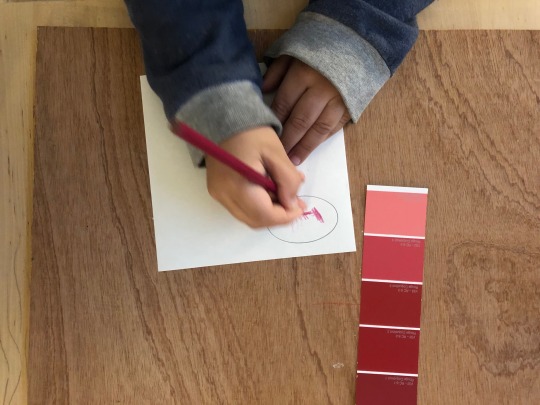

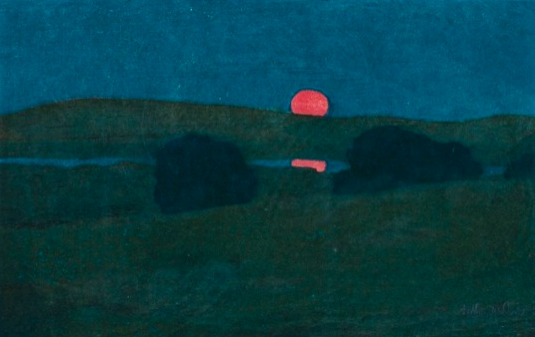
#La Petite école : Les enfants et l’équipe vous souhaitent un bel été !
Les enfants : Subhi, Yaser, Mairame, Noah, Thierno, Bassam, Mohamed, Mamadou, Valentin, Maïssa, Ahmad, Adnan, Mohammed, Suleyman, Khaled, Ludmilla, Fadi, Mahamad et Fabi.
L’équipe : Maya, Clizia, Zineb, Nathalie, Corentin, Alexis, Claire, Marie et Sophie.
Merci à tous ceux et celles qui rendent le projet de la Petite école possible par leur engagement tant humain que financier :
Maria Abecasis, l’Association Amis sans frontières, Laurence Baudhuin, Vincen Beeckman, Olivier Belenger, Joseph Beni, Thierry Boutemy, Arnaud Bozzini, Muriel Brio, Muriel Brusselmans , Charlotte Julie et Sandrine du Campus Saint-Jean, Isabelle et Jean-François Cats, François Casier, Anne et Antonio Castro Freire - Stichelmans, L’equipe du Cemome, Julianne, Marie et Fanny de La CODE, Monsieur et Madame Chavrier-Bouffanais, Celine Colmant, Elisabeth Cremades, Nicolas Dechamps, Maryse Degallaix, Julie De Cartier, Hélène de Fabribeckers, Carmen De Meyer, Matthias et Thibault De Meyer, Marie-Christine de Saint Georges, Claude de Selliers de Moranville, Laurence De Ridder, Madame La Ministre Caroline Désir, Claire Deveux, Bernard De Vos, Renald Dewinter, Sarah D’Hondt, Aïssatou Diop, Anaïs Domb, D’Ici et d’Ailleurs, Christelle Dister, Valérie Ducoeur, Elodie Druart, Christine Durand-Havenith, Julien Dutertre, Sophie Hubert de la Fondation Joseph DENAMUR, Philippe Ector, Houda El Aouadi, Bénédicte Emsens, Dominique Emsens, Patricia Emsens, Joshua Erber, Jacques Feron, le Fonds Jean Praet, le Fonds Joseph Schepers - Germaine Lijnen, la Fondation MAD Marguerite & Adrien Dassault, la Fondation Poussière d’Étoiles, la Fondation Resurrexit, la Fondation Roi Baudouin, Karine Forel, Véronique Goddeeris, Géraldine Goubau, Claudio Guthmann, Madeleine Guyot, Geneviève Hardy, Maud Hagelstein, Elisabeth Hers, Volkmar Hierner, Véronique Jacques, Marc Janssen, Etienne Jockir, Lahdily Soumia, Céline Lorand, Luca Lucian-Claudiu, Vincent Macaux, Roseline Magnee, Laetitia Mairlot, Nathalie Meert, Eric Mercenier, Jean-Claude Métraux, Florence Minder, Guy Minder, Pascale de Media Graphics, Etienne Mousnier, Souhayla Nouinou, Gerald Petit, Perspective Brussels, Axel Pleeck, Céline Plumerel, Katharine Ratnoff, Delphine Rotthier, Andres Saavedra Ulloa, Florence & Jean Stoefs, Yasmina Tarari, Gary et Pernelle de l’ASBL Tchaï, Linda Stevens, Antoinette Sturbelle, Jeannine Van Calster, Anne Van Den Boeymants, Christian Vander Stukken, Géraldine Van Houte, Renee Van Langhendonck, Sylvie Vanommeslaghe, Sarah Van Parys, Venedig Meer Asbl, Bernadette Verbruggen, Caroline Verbruggen, Ingrid Von Wantoch Rekowski, Lydie Wisshaupt-Claude.
Un merci particulier à Madame Andrée Geulen, à ses filles, Anne et Catherine Herscovici, ainsi qu’à toutes les personnes qui ont témoigné leur soutien à la Petite école en sa mémoire.
2 notes
·
View notes
Photo

La playlist de l'émission de ce jeudi matin sur Radio Campus Bruxelles entre 6h30 et 9h : John Fahey "The Great San Bernardino Birthday Party" (Guitar Vol. 4: The Great San Bernardino Birthday Party and Other Excursions/Takoma Records/1966) Joseph Spence "The Glory of Love" (Good Morning Mr. Walker/Arhoolie Records-Mississippi Records/1972-2009) ~Joanna Newsom~ "Divers" (Divers/Drag City Records/2015) Ramsey Lewis "Black Bird" (Mother Nature's Son/Cadet/1968) Emmanuelle Parrenin, Jean-Loup Baly, Jean-François Dutertre & Dominique Regef "Sur le pont de Nantes" (Le galant noyé : Ballades et chansons traditionnelles françaises/Le Chant du Monde/1975) Syndrome 81 & Coline Vialle "La ville" (Prisons imaginaires/Destructure-Sabotage/2022) Noël Akchoté & Stefania A. Verità "Le mépris" (Au Bordel - Souvenirs de Paris/Winter & Winter/1999) gnac "Une chanson du crépuscule" (An Evening in the Company of the Vespertine/Vespertine/1997) Arlt "Désennuyons-nous" (La Langue/Almost Musique/2009) Olivier Bloch-Lainé "Des Mots (Les Dromadaires)" (Des Mots/CBS/1976) The Soundcarriers "All These Things" (Wilds/Phosphonic/2022) The Rolling Stones "In Another Land" (Their Satanic Majesties Request/Decca/1967) Source "Nuit d'enfer" (7"/Sonor/196?) Hans Edler "Säg Vad Är Det ?" (Elektron Kukéso/Wah Wah Records/1971-2014) Liaisons Dangereuses "Mystère dans le brouillard" (7"/Mute Records/1981) The New Age Steppers "Love Forever" (The New Age Steppers/On-U Sound Records/1981) Céline Lory, "Écriture automatique - 10/9/2022" Serge Gainsbourg, Michel Colombier & William Klein "No no yes yes" (Mister Freedom OST (EP)/Barclay-Vadim Music/1968-2008) Gloria Barnes "Old Before My Time" (Uptown/Maple Records/1971) Bed "An Itch" (The Newton Plum/Ici d'ailleurs/2001) Scott Walker "The Ballad of Sacco and Vanzetti" (The Moviegoer/Philips/1972) Jacques Doyen, Jacques Lasry & Arlette Thomas "La mort des amants" (Poésie à Mi-Voix/Barclay/1967) Jacques Duvall "Je te hais" (Comme la romaine/Ariola/1983) LCD Soundsystem "Losing my Edge" (12"/Output - DFA Records/2002) https://www.instagram.com/p/Cih_M2eNyQ6/?igshid=NGJjMDIxMWI=
0 notes
Text
Ilustrar como un ilustrado
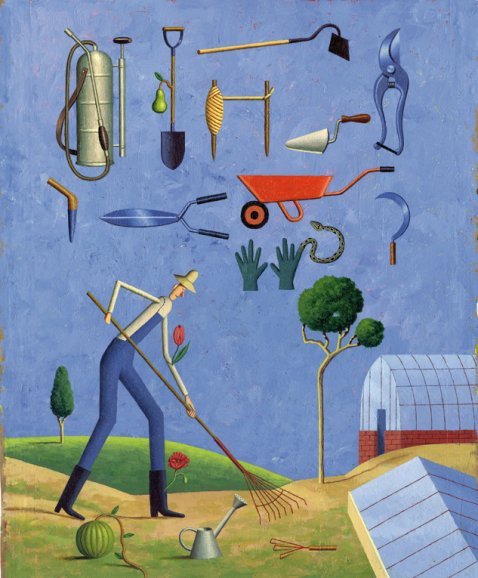
© Martin Jarrie, Lumières, l'Encyclopédie revisitée, Éditions de l'Édune, 2013.
Dentro del sumario «Préstamos & variaciones» no podía faltar un punto dedicado a la influencia en nuestros días del espíritu ilustrado y su afán enciclopédico en la forma de divulgar el conocimiento del mundo. Françoise Gouyou-Beauchamps, en su artículo «Lecciones tramposas sobre la realidad», sigue el rastro del paradigma ilustrado de L’Encyclopédie de Diderot y D’Alembert a través de muchos de los libros de conocimiento que llenan hoy las estanterías de los libros destinados a la infancia.
En efecto, en Francia la celebración del tricentenario del nacimiento de Denis Diderot (1713-1784) supuso un impulso editorial añadido en favor del álbum de no-ficción. La tendencia renovadora de este nicho de mercado ya estaba en marcha y el motivo de la efemérides dio lugar a la edición del libro Lumières, l'Encyclopédie revisitée, a cargo del autor Franck Prévot y doce ilustradores: Serge Bloch, Albertine, Janik Coat, Charles Dutertre, Martin Jarrie, Régis Lejonc, Jean-François Martin, Clotilde Perrin, Vincent Pianina, Rascal, Tom Schamp y Julia Wauters.
Gouyou-Beauchamps describe el modelo de representación que se popularizó entonces con el estilo de L’Encyclopédie y revela su artificio como un «efecto de realidad» diseñado para conseguir una aprehensión racional del entorno que ha perdurado hasta nuestros días. Nos habla del «efecto hipnótico» inherente al expositor de objetos a modo de catálogo o inventario de cosas, donde la representación de cada imagen expulsa todo detalle externo en un afán máximo de abstracción.
El artículo se detiene especialmente en el análisis de los trabajos más relevantes dentro de las producciones francesas actuales, tales como los libros de anatomía deudores de las láminas de L’Encyclopédie: Cómo construir un hermano mayor, de Anaïs Vaugelade (Juventud, 2018) y Le Dictionnaire fou du corps, de Katy Couprie (Thierry Magnier, 2012).
Igualmente la autora pone el foco en aquellos autores que exploran artísticamente ese «eco estructurador» con el que se plasma la múltiple variedad de los fenómenos. Entre ellos, el trabajo de Paul Cox en su abecedario abstracto Animaux, la galería de personajes diseñados por Blexbolex en Gente (Kókinos, 2008) o los inventarios de cosas de Martin Jarrie en Lumières o en Una cocina tan grande como un huerto (Kókinos, 2008), por ejemplo.
«Para todos estos autores, la referencia enciclopédica que clasifica el mundo no pertenece ni al campo de lo cognoscitivo ni al de la regresión; es una memoria vernácula y viva que riega poéticamente su producción, entre prosaísmo y cultura.»

© Paul Cox, Animaux, Le Seuil Jeunesse, 1997.
En definitiva, «Lecciones tramposas sobre la realidad» nos habla de una herencia que todavía hoy impera en la forma de visionar el mundo, algo que sin duda interesará a todo aquel que se encuentre relacionado con las ediciones de no-ficción.
Artículo dentro del sumario «Préstamos & variaciones».
Escríbenos a [email protected] y te la enviamos por 13 €, gastos de envío incluidos en territorio español.
También en nuestra lista de librerías.
0 notes
Photo


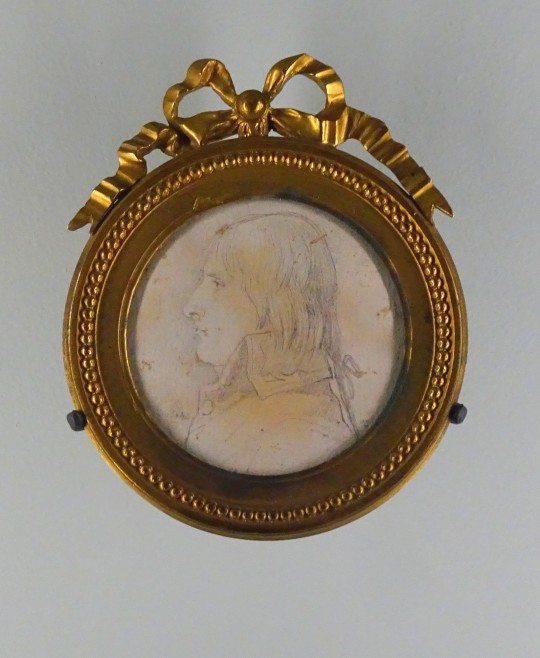
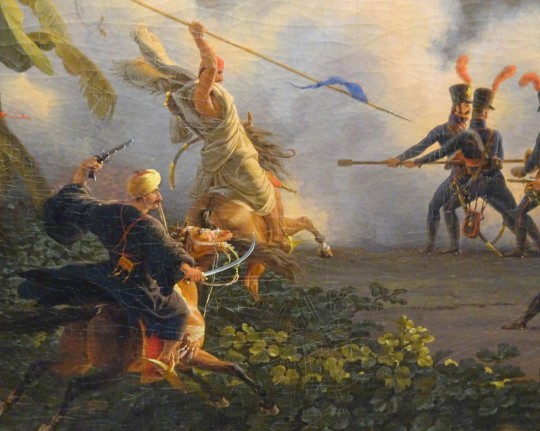

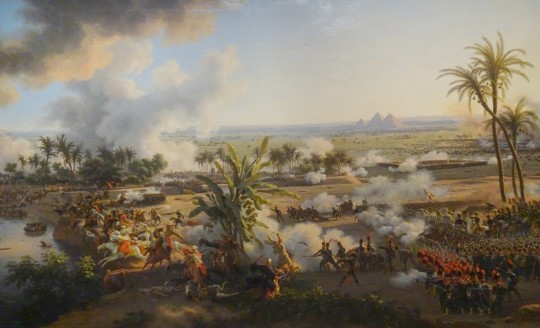

Au Louvre-Lens, il y avait une expo fort intéressante : “Champollion - La Voie des Hiéroglyphes”, sur l’homme, son époque, l’image de l’Egypte en Europe avant l’Egyptologie....
- les 2 premières : Jean-Antoine Lépine - Pendule “de Dendéra”
- André Dutertre - "Napoléon Bonaparte”
- le reste : Louis-François Lejeune - "Bataille des Pyramides, le 21 Juillet 1798″
#louvre-lens#expo#champollion#la voie des hiéroglyphes#égypte#égypte antique#égyptologie#style empire#jean-antoine lépine#dendéra#temple de dendéra#pendule#andré dutertre#napoléon#bonaparte#louis-françois lejeune#bataille des pyramides#campagne d'égypte#mamelouks#moustache
5 notes
·
View notes
Text
mini tournament, round 2, match 4: isabelle mijn dochterken vs pearl bryan vs les anneuax de marianson



examples & descriptions
isabelle mijn dochterken
"a girl is poisoned by her stepmother"
laïs
pearl bryan
(alternate title: pearl bryant)
"true story of a girl who was decapitated by her lover and his friend"
bruce buckley
les anneaux de marianson
(alternate title: prinsi raimund)
"husband kills his wife and her newborn son in a jealous rage, having been tricked by his wife's rejected suitor to believe she is unfaithful to him"
jean-françois dutertre (in french), la lionetta (in piemontese)
6 notes
·
View notes
Text
mini tournament, round 1, match 8: delia's gone vs les anneaux de marianson


examples & descriptions
delia's gone
(alternate titles: delia, little delia)
"i killed a lady for looking at me strange + now I'm being haunted"
johnny cash, pete seeger
bonus: little delia by blind willie mctell, the first known song about the murder of delia green
les anneaux de marianson
(alternate title: prinsi raimund)
"husband kills his wife and her newborn son in a jealous rage, having been tricked by his wife's rejected suitor to believe she is unfaithful to him"
jean-françois dutertre (in french), la lionetta (in piemontese)
6 notes
·
View notes
Photo
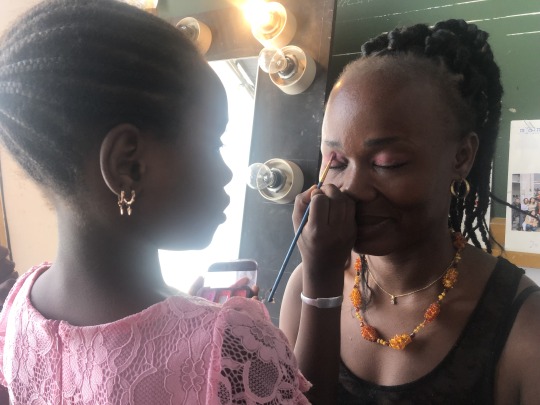

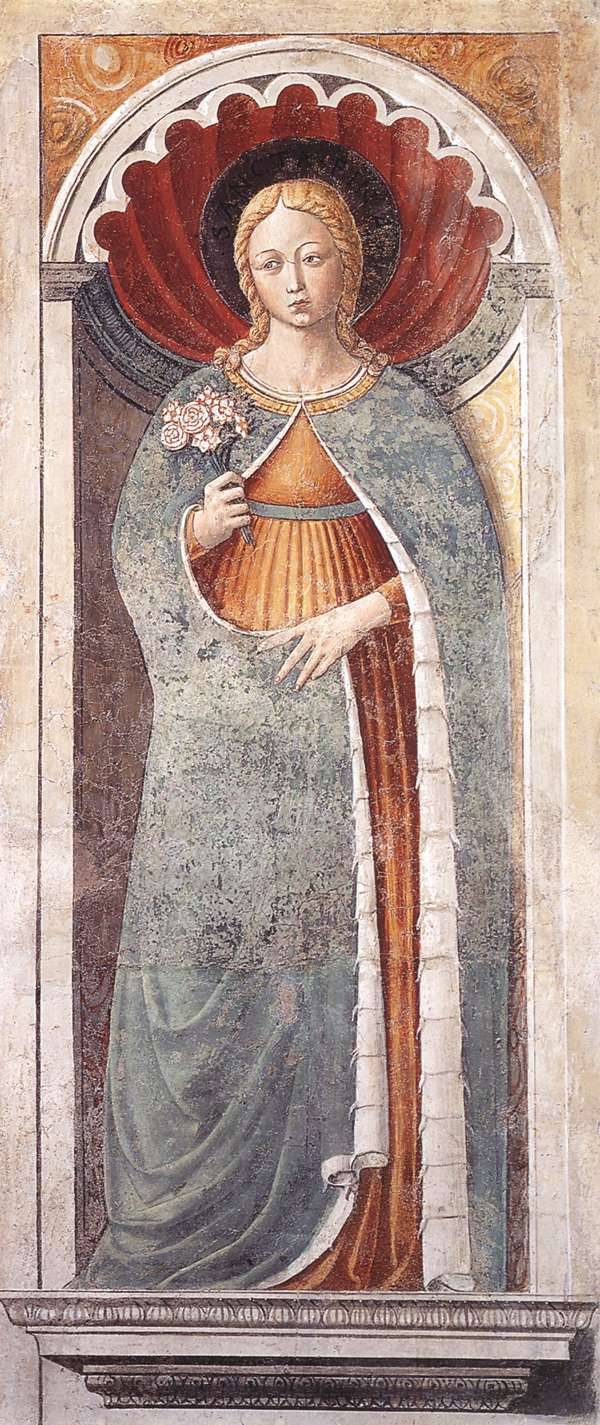
#Merci :
Aux enfants et à leurs familles.
A l’équipe de la Petite école : Maya Berezowski, Clizia Calderoni, Zineb El Houmi, Nathalie Eloy, Ivan Fatjo, Corentin Lorand, Alexis Lorich, Claire Pierrard et Sophie Senecaut.
Ainsi qu’à tous ceux et celles qui rendent ce projet possible :
Les ateliers de la rue Voot, Maria Abecasis, Olivier Belenger, Joseph Beni, Arnaud Bozzini, Muriel Brio, Muriel Brusselmans , Charlotte Julie et Sandrine du Campus Saint-Jean, Isabelle et Jean-François Cats, Anne et Antonio Castro Freire - Stichelmans, L’equipe du Cemome, Julianne Marie et Sébatien de La CODE, Celine Colmant, Nicolas Dechamps, Laure de Hesselle du magazine Imagine, Hélène de Fabribeckers, Carmen De Meyer, Matthias et Thibault De Meyer, Claude de Selliers de Moranville, Claire Deveux, Renald Dewinter, Sarah D’Hondt, Ibrahima Diokine, Benoît et Valentine du centre de santé mentale D’Ici et d’Ailleurs, Christine Durand-Havenith, Julien Dutertre, Sophie Hubert de la Fondation Joseph DENAMUR, Philippe Ector, Bénédicte Emsens, Dominique Emsens, Patricia Emsens, Jacques Feron, La Ferme Rose, la Fondation MAD Marguerite & Adrien Dassault, la Fondation Poussière d’étoiles, la Fondation Roi Baudouin, Gisele Frisch, Madame la Ministre Valérie Glatigny, Véronique Goddeeris, Géraldine Goubau, Claudio Guthmann, Fatou Hane, Geneviève Hardy, Maud Hagelstein, Bruno Herin, Elisabeth Hers, Véronique Jacques, Marc Janssen, Etienne Jockir, Veronka Koever, La Librairie Lagrange Points, Ariane Lippens, Luca Lucian-Claudiu, Vincent Macaux, Roseline Magnee, Laetitia Mairlot, Nathalie Meert, Eric Mercenier, Florence Minder, Guy Minder, Aika Mittler, Pascale de Media Graphics, Gerald Petit, Perspective Brussels, Axel Pleeck, Katharine Ratnoff, Delphine Rotthier, Andres Saavedra Ulloa, le Fonds Joseph Schepers - Germaine Lijnen, Yasmina Tarari, Gary et Pernelle de Tchaï, Linda Stevens, le Théâtre des Tanneurs, Julie Tenret, Jeannine Van Calster, Renee Van Langhendonck, Sylvie Vanommeslaghe, Sarah Van Parys, Venedig Meer Asbl, Bernadette Verbruggen, Caroline Verbruggen, ainsi qu’à Madame La Ministre Caroline Désir pour sa confiance et son précieux soutien.
3 notes
·
View notes